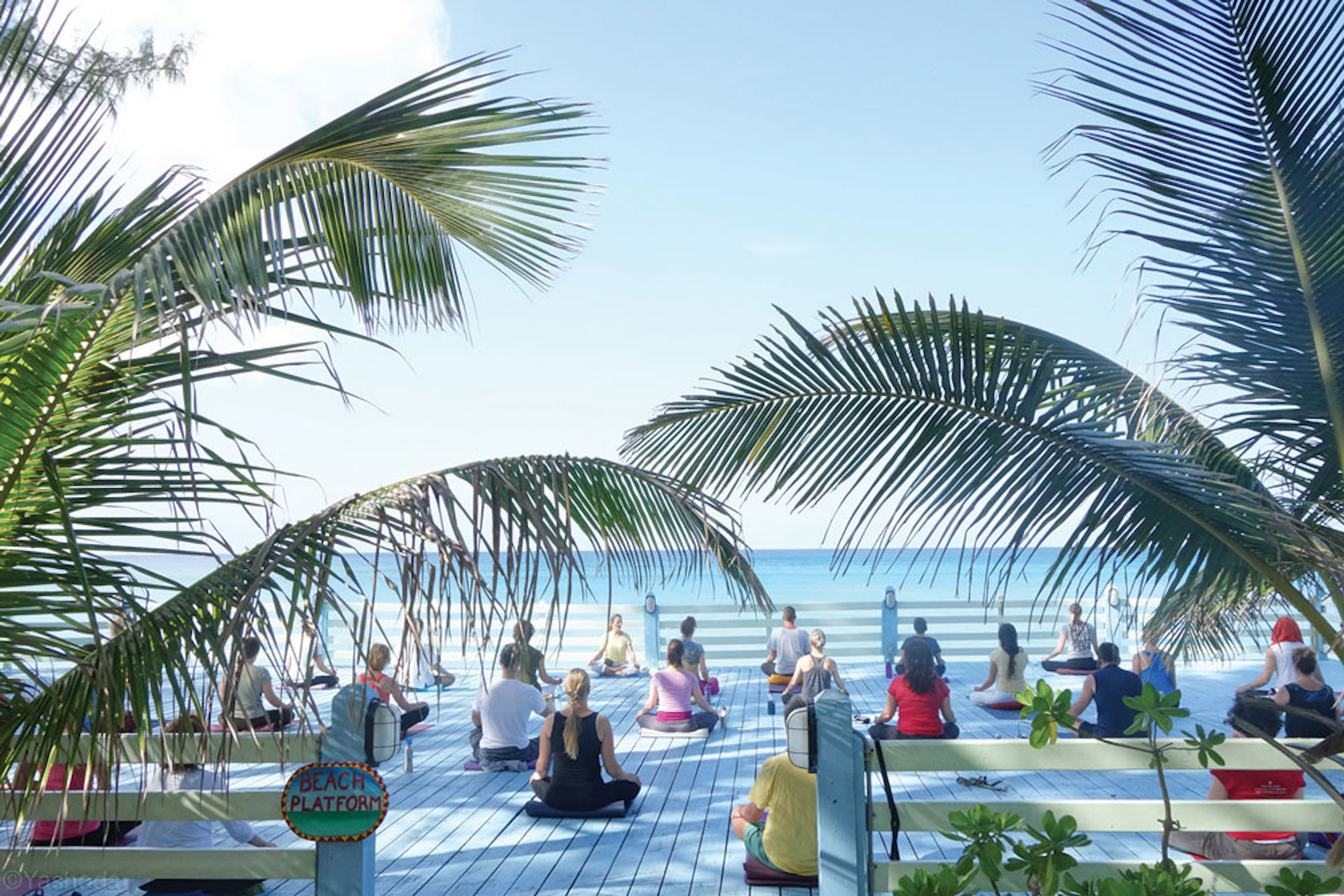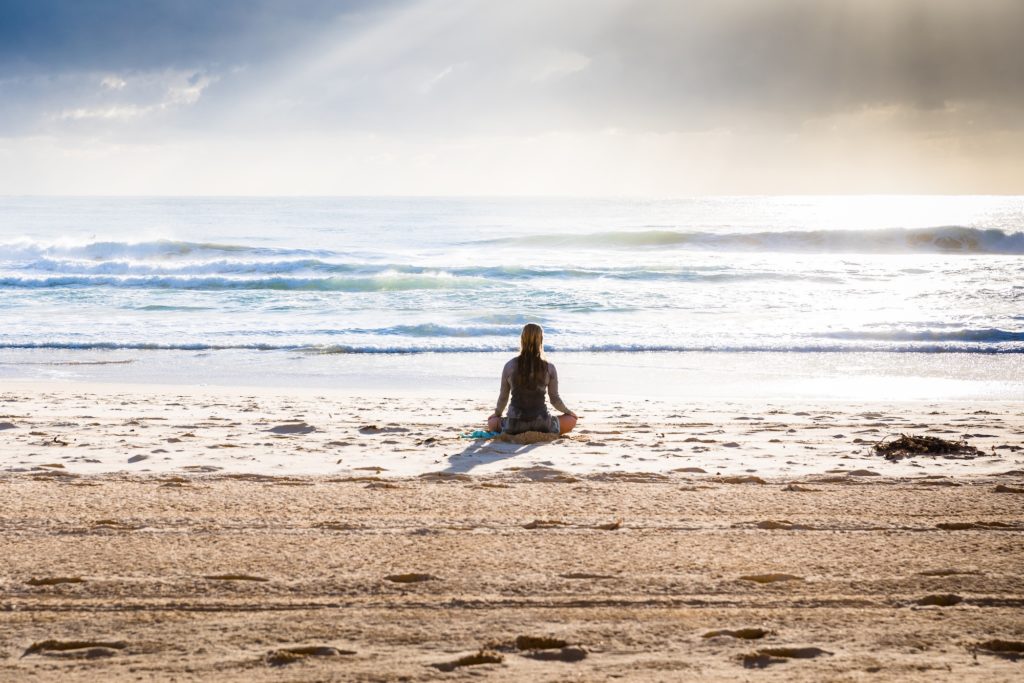Sometime between the advent of the “summer bod” and wearing your gym clothes to brunch, health and fitness transformed from a once-a-year worry into a full-blown lifestyle — one that never takes a vacation.
Now, your getaway isn’t an escape from your healthy habits, it’s an all-inclusive immersion.
Vacations like these fall under the category of wellness tourism — aka “any kind of travel for the purpose of promoting health and well-being through physical, psychological, or spiritual activities”. That means your trip could be for detox dieting, yoga, hiking, a spiritual awakening, or a combination of all of the above.
Apparently, nowadays spending your vacation getting drunk off a ridiculous number of piña coladas and passing out on a beach with half-eaten nachos in your lap is frowned upon.
The Business Of Wanderlust
While most probably assume wellness tourism is just a fancy term for a yoga instructor going off the grid (sans Instagram) in India or Costa Rica, that’s simply not the case. According to the Global Wellness Institute, wellness tourism is actually one of the fastest-growing tourism markets.
This is a big deal. How big? Consider this: between 2013 and 2015, the wellness tourism industry experienced 14% growth, totaling $563 billion. Meanwhile, during that same time, the entire tourism industry only grew by 6.9%. And this is just the start — wellness tourism is expected to reach $808 billion by 2020.
But these aren’t your mom and dad’s trips to a Sandals resort. Like most trends these days, millennials seem to be upending the status quo. One survey of 5,000 millennials found that 40% of respondents would rather go on a fitness retreat with their favorite instructor than attend a five-star resort. Another survey of more than 8,000 millennials found that 42% of them were willing to forego great food for healthier options, and 24% would give up alcohol.
All this health stuff is making any sort of debauched vacationing seem very uncool. But the seemingly abrupt shift from booze-filled spring break to wellness wanderlust has led us to ask: what’s driving the explosive growth of wellness tourism?

Wellness Era
The rise of wellness tourism can be attributed to a couple of things. First off, society has become obsessed with the idea of wellness and self-care. It’s currently a $3.7 trillion industry.
Although many may argue that society’s obsession with wellness is becoming unhealthy—some going as far as to call it a syndrome—the reality is people have embraced it into their way of life. So, as we continually strive towards a healthy and positive lifestyle in our everyday life, it’s only natural that wellness is filtering into our vacation life, too. Plus, millennials are particularly passionate about health and wellness, so as they grow into their spending power, wellness travel will continue to thrive.
It’s not just our desire to live our best lives that’s driving this trend either. Chronic diseases are at an epidemic level, we are vacation-deprived, sleep-deprived, have no work-life balance, and are constantly being bombarded with information from our devices. We’re so burned out that people want vacations that actually let you relax and rest.
“People can’t afford, given the levels of stress, to take a vacation that is not in some ways restorative or rejuvenating,” says Beth McGroarty, research director at the Global Wellness Institute.
Hence, the wellness tourism boom.
The Good
There are more than a few people who are delighted by this trend.
Tourism can be the lifeblood of a country’s economy and wellness tourism can be like giving the economy a transfusion.
Wellness tourists, on average, spend about 130% more than normal tourists, which means an influx of cash to local economies. For example, in the Amazon, where ayahuasca (a psychoactive brew) trips are super trendy, 10 of the 40 biggest camps cash in nearly $7 million annually by hosting foreigners for more than $2,000 per stay. (Yes, they do charge that much to give you a drug-induced violent stomach flu for 24 hours.)
The rise in popularity of wellness tourism also means a lot of jobs. In India, more than five million jobsare linked to the industry.
And wellness tourism is helping keep travel agents in business, as millennials are relying on them more than ever for their niche expertise. Travel industry firm MMGY reported 33% of millennials said they planned on using a travel agent in the next two years and ASTA’s How America Travels National Surveyshowed that 44% of them also thought using an agent is “worth it.”
The other thing wellness tourism is helping out is the problem of “overtourism”, a term used to describe a location that is so overrun by tourists that the quality of the experience is ruined. Think Disneyland in the summer or the Mona Lisa in the Louvre.
“Wellness travel brings people to the country but not to the same old places,” explains McGroarty. “One of the trends of wellness travel is more off-the-grid, deep in nature, so you’re getting people out of the old tourist traps.”
And the little research that’s out there seems to show that wellness holidays are also actually good for individual health. One study found significant improvements in physical and mental well-being after attending a one week retreat. The effects also seem to be sustained up to six weeks after.
The Bad
But not all wellness holidays are kale smoothies, sun salutations, and meditative bliss.
Wellness tourism is still pretty unregulated. Training and qualifications vary widely depending on the country and company and, somewhat worryingly, one study found that over 60% of retreat respondents said they did not engage with regulations or accreditation beyond basic accommodation or health and safety issues.
Unlike with medicine, where there are bodies like the FDA controlling quality and safety, when it comes to wellness, there isn’t any sort of regulatory department making sure there’s no sketchy-ass stuff happening. Safety is definitely not guaranteed.
There have now been several incidents where tourists have died on ayahuasca retreats. There have also been a number of people who have died in sweat lodges, including that very high-profile James Arthur Ray incident. Then there’s those meditation retreats that turn into cults, which is kind of what happened with the Rajneesh movement.
Those incidents, while extreme and rare, can happen and without proper regulations, anyone can claim to be anything. So, for a consumer, it can be really hard to weed out the legitimate, safe experiences from the illegal, dangerous ones.
That being said, most wellness vacations are harmless… except maybe to the environment.

The Ugly
Simply put, a lot of “wellness destinations” just aren’t equipped to handle the influx of people. The big draw of these remote locations is that people can go there to figure their own shit out. But once everyone shows up, the areas struggle to figure out where exactly the literal shit is going to go.
In some instances, it goes straight into the water supply without being processed. For example, in Rishikesh, India, a popular yoga tourism destination ended up with a massive raw sewage problem because they didn’t have the sanitation infrastructure in place to deal with thousands of yogis descending on their tiny town for a yoga festival.
According to the Hindustan Times, a survey submitted to India’s National Green Tribunal in 2016 indicated at least 1,500 hotels and ashrams in the region were dumping sewage directly into the river. In recent years, they’ve started building treatment plants, but they still struggle with water quality.
A similar problem happened in Tulum, Mexico, according to filmmaker Rachel Appel. Tulum has quickly become known for its eco-wellness vacations but, according to Appel, in the rush to keep up with the tourist boom, they forgot about being sustainable and environmentally friendly.
Hotels began dumping sewage straight into Tulum’s aquifer system and running diesel generators day and night. Then, a massive landfill was created a few miles away from the city center.
And it’s not just pollution, wellness tourism can also destroy natural resources and habitats. The ayahuasca boom has led to a short supply of the plant, which in turn has led to uptake in commercial planting and is fueling fears of deforestation.
But as McGroarty points out: “The vast majority of wellness destinations have to make the environment a factor because the customer they’re serving cares [about it] and you have to have a sustainable approach or you’re not going to have a destination for very long.”
Know What You’re Signing Up For
Done right, wellness tourism helps broaden horizons, expand minds, chill out the chronically stressed, help stimulate economies, and can make for some pretty enviable Instagram posts.
Sure, there’s a dark side to it. Capitalism isn’t always pretty. There are companies that are just looking to piggyback on a trend and, in those cases, they have a tendency to cut corners, exploit workers, and systematically fail to plan for the inevitable necessities… like waste removal. That means, instead of an amazing life-changing experience, you can end up with something along the lines of Fyre Festival.
Big picture time: the reputable wellness vacations promote healthy eating, an active lifestyle, and emphasize relaxation over getting utterly trashed, so we’re all for it.
But if your ideal getaway is sitting by a pool drinking beer out of a mini-keg and eating as many french fries as the all-you-can-eat buffet offers, go for it. It’s your vacation after all.
Want to get in touch? Email anthony@fitt.co with tips, questions, or to continue the conversation.




